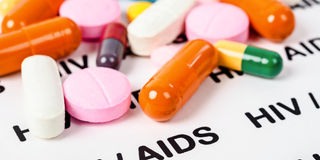Let us prevent, treat and raise HIV awareness

Domestic funding for HIV/Aids is emerging to be a critical factor in the fight against the epidemic.
What you need to know:
- Studies have revealed that this demography represents a significant segment of the population that is sexually active.
- A solid war chest is required to keep steady the supply of lifesaving ARVs and other essential drugs needed for treatment and prevention of HIV/Aids.
The National Aids Control Council (NACC) says there were 34,000 new HIV/Aids infections in Kenya last year. Nearly half, or 42 per cent, of these cases were in the 15-24 age group, comprising adolescents and young people.
Studies have revealed that this demography represents a significant segment of the population that is sexually active. This is a startling development, considering that HIV/Aids is a mostly sexually transmitted disease and the median age in Kenya is 20 years. Unless immediate intervention measures are put in place with renewed zeal, the gains realised over the years in the fight against the ever-unrelenting epidemic risk being washed away.
In the recently presented national Budget, the government set aside Sh5.8 billion to wage war against HIV/Aids and two other diseases of national importance — malaria and tuberculosis (TB). While this allocation is an improvement from past amounts, it is still a drop in the ocean; managing the more than 1.5 million people living with the virus requires Sh25 billion.
Domestic funding for HIV/Aids is emerging to be a critical factor in the fight against the epidemic. Foreign funding has dwindled in recent years, a situation compounded by the economic crisis as a result of the Covid-19 pandemic. The recent stand-off between the government and USAid over the distribution of lifesaving antiretroviral drugs (ARVs) should cement the need for self-reliance by increasing domestic funding for health programmes.
Prevention of new cases and reducing the number of HIV/Aids-related deaths remains the most important indicator in the measure of success in the fight against the epidemic. Efforts to identify segments of the population living with HIV in every part of the country need to be heightened. This will ensure that the targeted group is not left out of prevention, treatment and sensitisation measures.
Diagnostic kits
A solid war chest is required to keep steady the supply of lifesaving ARVs and other essential drugs needed for treatment and prevention of HIV/Aids, including pre-exposure prophylaxis for those at the greatest risk. In addition, diagnostic kits should be readily available for timely screening and identification of positive cases, to be put under treatment.
One of the foremost contributors of new infections, especially among children, are women of reproductive age. Prevention of mother-to-child transmission is, therefore, an important intervention. NACC says there are 106,860 children, up to 14 years, living with HIV, most of whom acquired the virus during pregnancy, delivery or breastfeeding.
Preventing unintended pregnancies among women living with HIV by promoting appropriate family planning methods could curb the increase in the number of children born with HIV. The government should embark on comprehensive sex education around prevention with focus on the much-publicised behavioural changes — ABC: Abstain, be faithful and use a condom.
Dr Kerima (PhD) is a biochemist. [email protected]. @KerimaZablon





